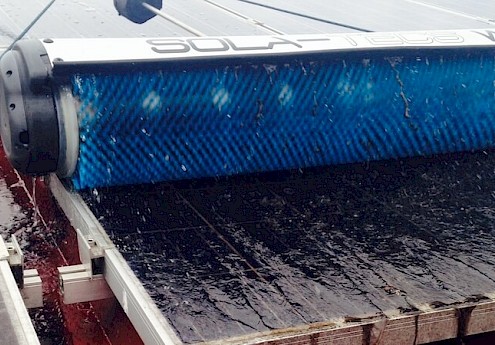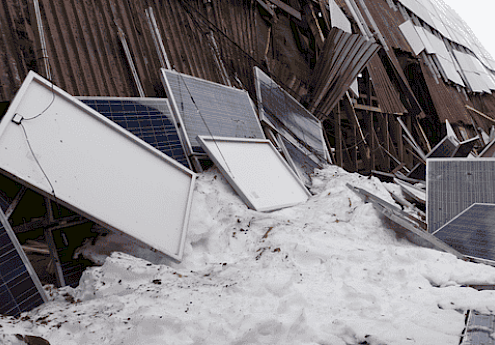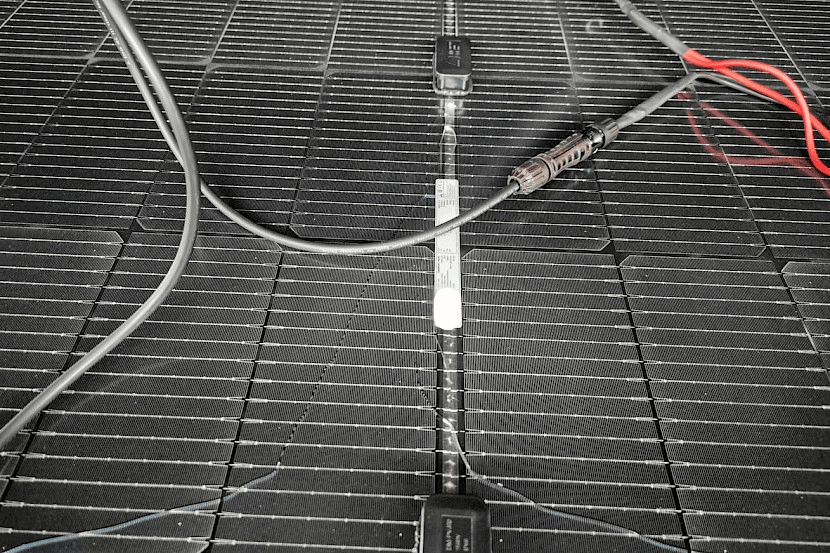
Glass breakage in large modules without external influence
Since 2023, there has been increasing reports of broken glass on modules in PV power plants.
In which modules are glass breakages currently occurring more frequently?
In principle, glass breakages are nothing unusual. What is new is that they have been occurring a few months after installation and without any external influence. Neither extreme weather nor installation errors cause the breakages. Cases are recorded for both framed and unframed glass-glass modules, on the front and back.
For a long time, glass-glass modules were considered to be more stable than those with a foil backing. At Intersolar 2014, Solarworld let a cyclist jump onto glass-glass modules to demonstrate their resistance to breakage. Electroluminescence images taken afterwards confirmed that the cells between the glass had also remained intact.
In contrast to Solarworld's modules and the modules manufactured today for roof systems, however, the modules used in ground-mounted systems are significantly larger. The glass breakages observed occur in modules with a surface area of more than 2.5 square meters. The largest modules on the market today cover more than 3 square meters.
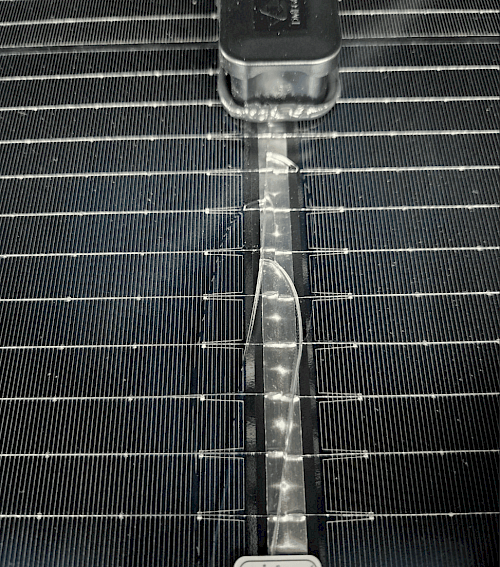
Quality criterion for glasses: tempering
The size of the modules is one cause of glass breakage. The Fraunhofer Institute for Solar Energy Systems (ISE) has tested in the laboratory what other correlations there are. Among the quality criteria, they took a closer look at the glass tempering.
During thermal tempering, newly manufactured glass is heated up even more and then cooled down quickly. This causes the glass to develop a residual stress that is independent of external influences. The technical term for this is glass tempering. The higher the toughening of a glass, the higher its bending stress, i.e. the compressive load under which a glass breaks. A high pre-stress also means that the glass, if it breaks, shatters completely into small cube-like pieces. This is familiar from windscreens or rear windows made of safety glass.
Research at Fraunhofer ISE: Which modules break first in the lab?
In the laboratory, the scientists examined commercially available PV module types with a surface area of two square meters: glass-glass modules with 2-millimeter glass and 1.6-millimetre glass as well as glass-foil modules with 3.2-millimetre safety glass. On the front side, the preload was highest for the glass-foil modules and lowest for the glass-glass modules with 2-millimeter glass. The latter broke under a significantly lower load than the other module types. While the first glass-glass modules with thinner glass and the first glass-foil modules only showed cracks at more than 5,400 pascals, this was the case for the modules with 2-millimeter glass between 3,500 and 4,700 pascals.
For comparison: The mechanical load test as part of module certification in accordance with IEC 61215 and IEC 61730 stipulates a static load of 2,400 pascals. Some module
manufacturers subject their modules to an optional test with 5,400 pascals - the modules with 2-millimeter glass would not have passed this test, but the others would have.
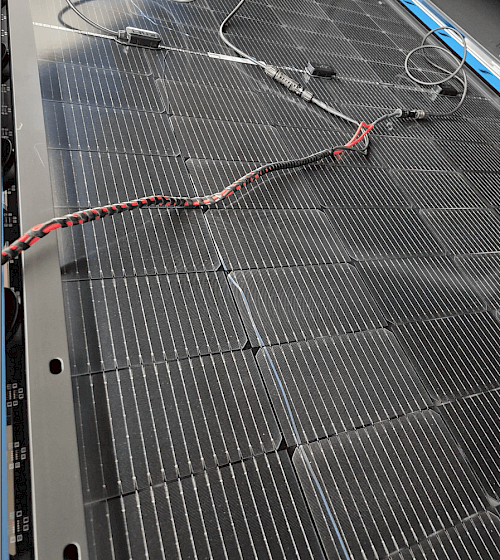
How can you be sure that the modules can withstand high loads?
The study by Fraunhofer ISE shows: It is not the glass thickness that is decisive for the bending fracture stress, but the quality of the glass. To ensure that the glass can withstand a high load, either obtain proof of an additional load test at 5,400 pascals or ask the module manufacturer whether their glass is thermally toughened. If you want to be on the safe side, you can also send a module to a laboratory for a load test with increased pressure[1].
Author: Ines Rutschmann
